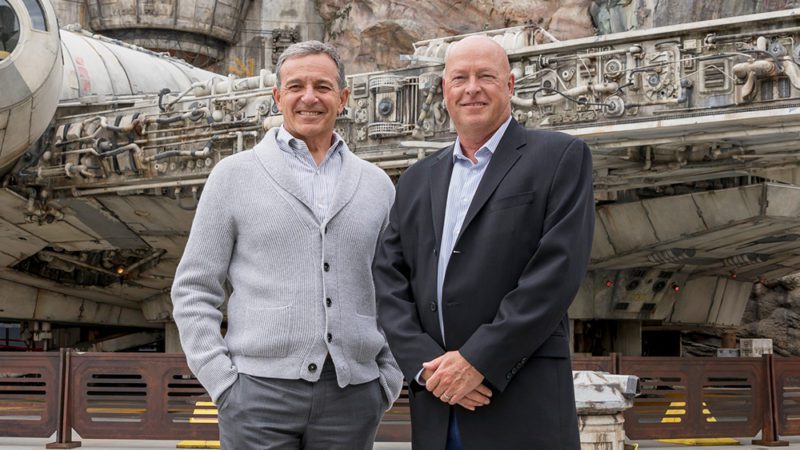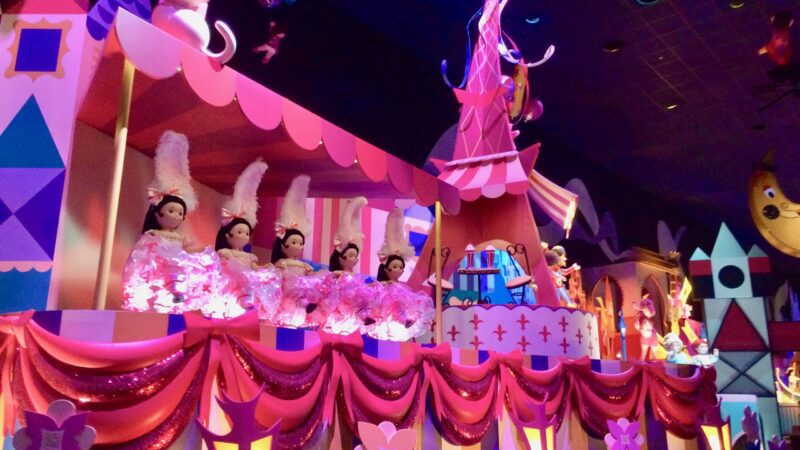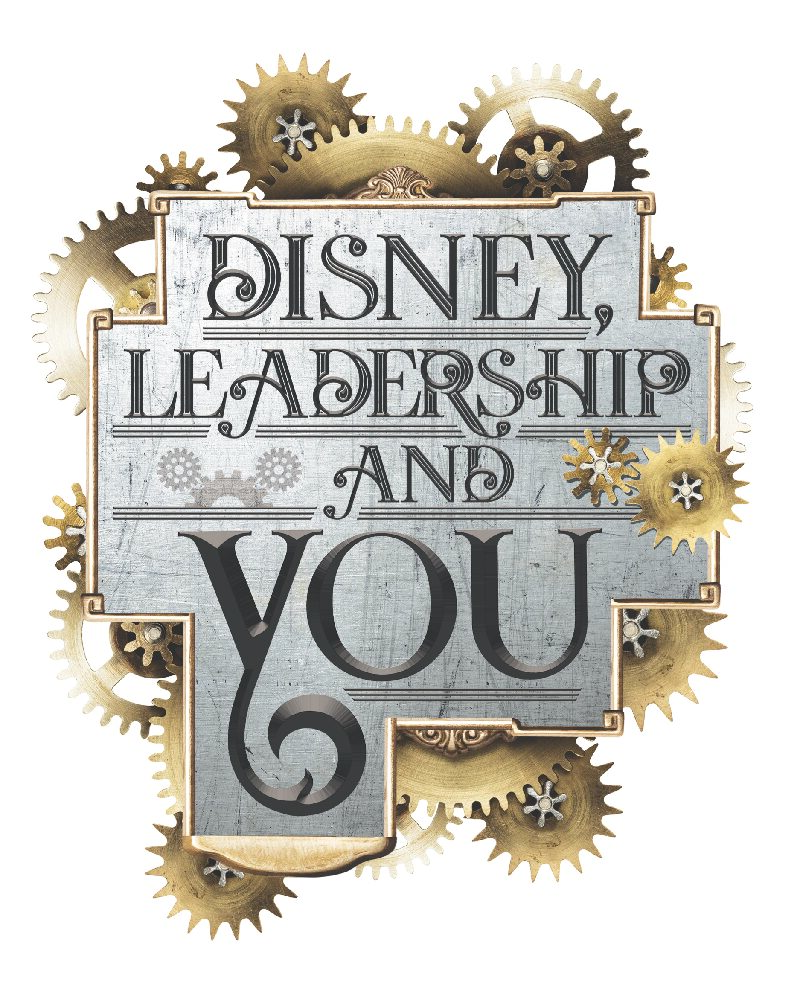From Birthdays to To Toontowns; From Meet ‘n Greets to Circuses: The MATADORS
It won’t be long before all of Storybook Circus opens at the Magic Kingdom at Walt Disney World. It’s a good time to reflect on its history and how it has evolved to what it is quickly becoming.
Disney loves to celebrate, and when there’s a reason to do so, they pull out the red carpet–sometimes quickly. In his memories of being a press agent, Spinning Disney’s World, Charles Ridgway talks about a group organized by Michael called the MATADORS (Marketing and Admissions Team Assigned to Disney Objectives of Rapidly Succeeding). Because so little had traditionally been done in terms of mass marketing prior to Eisner, this team was responsible for creating new promotional opportunities for the company. The Rockettes coming to Walt Disney World and Disney-shaped hot air balloons sailing across the country were examples of this.
Perhaps the MATADORS’ biggest accomplishment came on the eve of Mickey’s 60th birthday. The original thought was to do the typical bunting, signage, and parade. Some additional brainstorming came in about adding a birthday tent in the parking lot behind Main Street, and then offering a bunch of birthday-related activities. A show, and even the idea of building Mickey’s house adjacent to that, was designed up.
When the idea was presented to Imagineering, there was considerable pushback, simply because there was a huge effort underway to open the working studios of Disney-MGM that year, followed by the actual park experience the following year. Disappointed, the MATADORS took their idea to the “Can Do” maintenance planning team dedicated to projects at Walt Disney World. From there the idea grew to creating the event in an unused corner sandwiched between Fantasyland and Tomorrowland. Also conceived was the idea of adding a train station, and re-theming that to Mickey’s Birthday Express.

In February of that year, the MATADORS got permission from Eisner to create the new Birthdayland. A budget of $12 million was set aside–a modest amount considering that Splash Mountain built during that same period cost nearly ten times that amount. The only challenge was that Eisner insisted that the project be completed by summer so it would support increased attendance that season.
Construction started the day after approval and the time frame was tight. There were many components to the project. Guests would be welcomed to Duckburg with a population in the “bill”ions. There was Grandma Duck’s farm with a Minnie Moo, a cow who had a Mickey Mouse silhouette on one side of her body. There was also a modest playground and an inflatable of Mickey. There was even Mickey’s House–a place you could walk through and visit.
Yet probably what people remembered most were the circus tents rising up into the sky. Entertainment came in with three big circus-style tents just for for the birthday show–one for the queue, one for the show itself, and one for a “happy birthday” finale/retail space. Then they also erected a fourth tent fronted by a theater marquee as a space to go and see Mickey Mouse in his own dressing room. They reasoned that if it were Mickey’s birthday, a lot of people would want to get a picture with him. So they created a dedicated space that “magically” optimized the number of people who could see Mickey in the same moment.

Amazingly, the project opened that summer with Nancy Reagan being guest of honor at the dedication. Though it went over budget by a couple of million, it was so popular and so well received that after the birthday, management kept the entire land, making modest cosmetic changes and re-titling it as Mickey’s Starland.
In the wake of this success, Imagineers finally got on board by further expanding the idea and opening an entire Toontown in 1993 at Disneyland in California. Then looking back at the Magic Kingdom, they knew they needed to do something more. In the years following, the structure created for the land to serve as a temporary attraction had long worn out its welcome. It was time to do something different.

As a Cast Member I was there at 3:30 in the morning on October 1, 1996 when Mickey’s Toontown Fair was being hosed down and prepared for the first guests that morning. In the distance you could see a glowing Cinderella Castle in the form of a birthday cake for the whole park. But the real changes on that day were here in this corner of the park. In fact, after the re-dedication ceremonies that day, I went home, picked up my wife and little ones, and took them out to the park so they could see the new land outfitted for the Fab Five. Included was Minnie’s house, Goofy’s Barnstormer, Donald’s Boat, a new playground, and new meet ‘n greet locations, for not only Mickey, but other Disney characters as well. One of the four tents was taken away, but there were still three remaining. Rather than creating a Toontown like at Disneyland, Imagineers re-engineered the tents and played up the concept of a fair-type experience. Other than the tents and the train station, little of the original Birthdayland/Starland remained. Even Mickey’s House was completely reshaped to be more cartoon like in its appearance, with few, if any, 90-degree angles.

Millions have visited Mickey’s Toontown Fair over the years. Still, it wasn’t like Toontown at Disneyland. There was still a lack of permanence. With the new Fantasyland expansion came the opportunity to re-look at this corner of the Magic Kingdom. The idea was to take the circus tent and Goofy’s Barnstormer and merge it with Dumbo The Flying Elephant–something that was not really a part of the medieval fare of Fantasyland. Of the four original tents, only two remain, but another two have been created, one for Dumbo’s queue and another for food and beverage. The earlier tents have been redone and the intent is for them to provide a meet ‘n greet and the other to provide retail, much as they had before, but with more of a Dumbo-style circus flair. The time period is decidedly late 30s/early 40s, the same period as when Dumbo was first released.

The marketing MATADORS no longer exist, and this new project has been more thoughtfully thought up and carried out by expert Imagineers. Some people don’t care to see the circus tents still there. But for me, it stands as a colorful memorial of a team of Disney Cast Members who took on a big assignment on a tight deadline. It also resulted in two major milestones. First, it created the notion of building a Toontown themed land, still found in Disneyland and Tokyo Disneyland today. Secondly–and perhaps more importantly–it defined the idea of a dedicated character meet ‘n greet experience. It set a precedent for having dedicated spaces to visit the Disney characters, which up until this point was simply done out in the streets of the park.

If it had not been for the imagination and persistence of the MATADORS, along with the hard work of the maintenance team at Walt Disney World, we probably wouldn’t have those two kinds of experiences today. Disney parks are complicated attractions, something that doesn’t afford a quick-turn around. But in that short creative space, magic was made overnight that created new kinds of experiences we still enjoy today.





